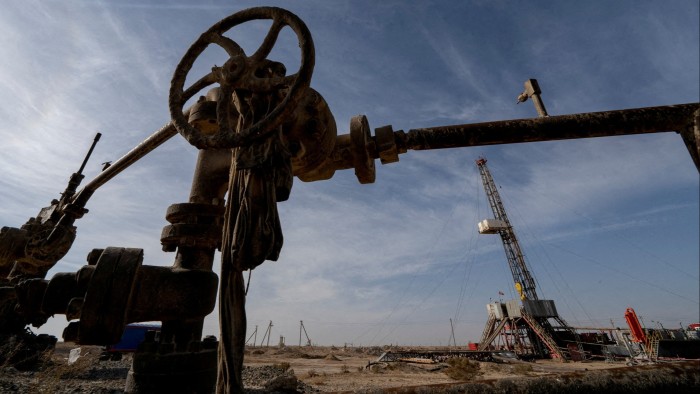Unlock the Editor’s Digest for free
Roula Khalaf, Editor of the FT, selects her favourite stories in this weekly newsletter.
Oil prices slumped in early Asian trading on Monday over renewed concerns of a global supply glut following a decision by Opec+ to announce a second consecutive monthly output increase.
Brent crude, the global benchmark, fell by more than 4 per cent to below $59 as trading began the week, testing four year lows hit last week. The price of West Texas Intermediate, the US benchmark, fell to near $56.
Traders were reacting to a decision on Saturday by eight Opec+ members, including Saudi Arabia and Russia, to increase supply by 411,000 barrels a day in June. The move came in spite of sliding prices caused by fears of oversupply and economic weakness linked to Donald Trump’s trade war.
The oil cartel surprised the market last month by announcing a jump in production of the same size, more than three times as much as was expected. The combination of increased Opec supply and fears that US trade tariffs will dampen the global economy saw benchmark Brent crude fall by nearly a fifth in April, the largest monthly drop in almost three and half years.
The move by Opec+ to again pump more oil into a falling market marks a significant change of approach, said Jorge León, a former Opec employee now at energy consultancy Rystad.
“Opec+ has just thrown a bombshell into the oil market,” he said, adding: “Last month’s decision was a wake-up call. Today’s decision is a definitive message that the Saudi-led group is changing strategy and pursuing market share after years of cutting production.”
For the past three years, Opec+ had cut collective output by nearly 6mn b/d to bolster prices, a strategy that initially kept crude above $90 a barrel through much of 2022. But its effectiveness has waned amid tepid demand, rising US output, and lax quota discipline among members.
Tensions within the cartel have grown, particularly with Kazakhstan, which has expanded output from its Chevron-led Tengiz field and indicated it would prioritise “national interests” over group quotas.
In response, Saudi Arabia has begun to unwind production curbs, pushing for this month’s increase.
The kingdom, which had cut its own production by 2mn b/d over the past three years, has grown increasingly frustrated with shouldering the biggest portion of the cuts, while other members, including Kazakhstan and Iraq, consistently pumped above their quotas.
Saudi officials are now comfortable with bringing back supply even if it leads to a prolonged period of lower prices, according to people familiar with the kingdom’s thinking. It is unclear why Saudi, which is struggling to balance its national budget because of lower oil prices, has pivoted to the new strategy, which is likely to lead to lower oil prices for the rest of this year.
Some analysts questioned how much oil would actually reach the market. Bjarne Schieldrop, chief commodities analyst at SEB, noted that Opec+ production in April fell by 200,000 b/d due to Venezuelan sanctions, and said the planned increases might fall short if past quota violators such as Kazakhstan, Iraq and the UAE reined in output.

